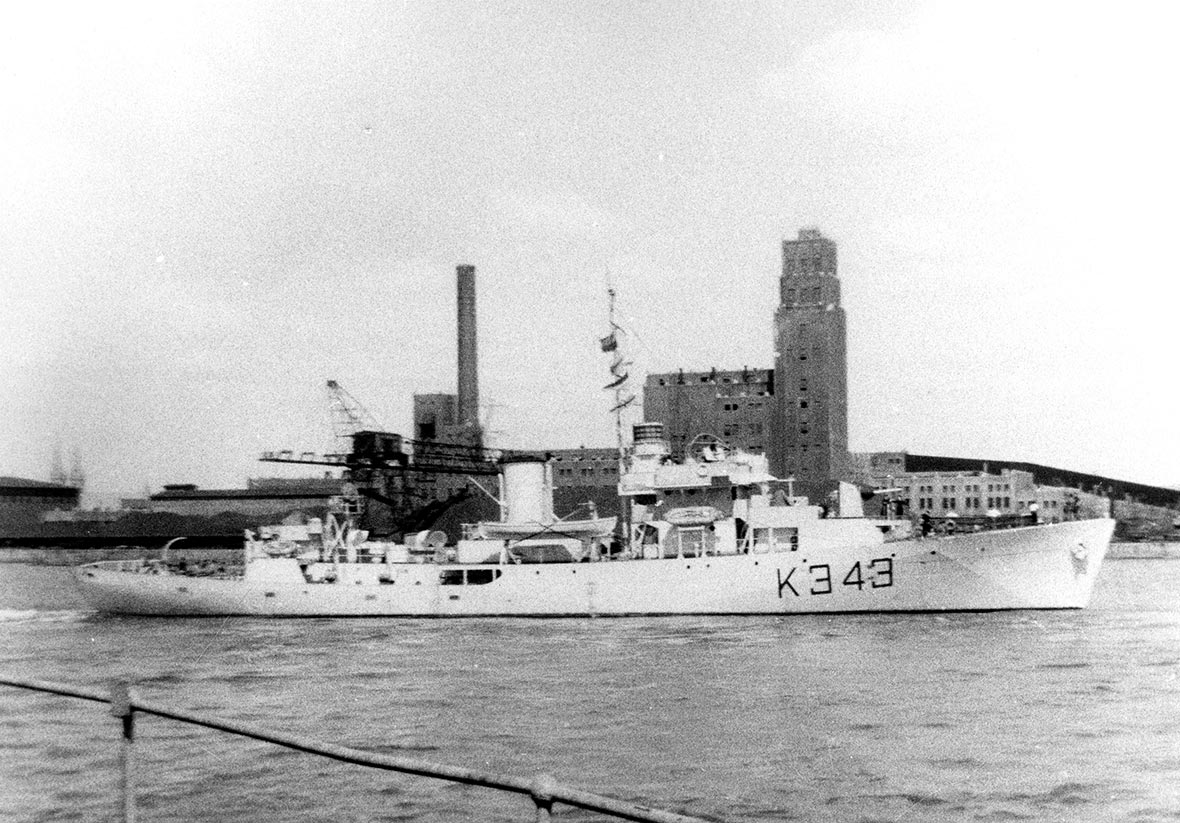HMCS St. Lambert
There has been only one vessel named HMCS St. Lambert in the Royal Canadian Navy.
HMCS St. Lambert (K343)
The Flower Class corvette was designed by William Reed of Smith’s Dock Co. near Middlesbrough, Yorkshire and patterned after his firm’s whale-catcher, Southern Pride, of 1936. The Canadian naval staff was impressed with the ship’s design especially the short length. This would allow safe navigation of the St. Lawrence canal system as many ships were to be built in Great Lakes shipyards. The corvette was originally designed as a coastal escort, but the shortage of ocean escorts forced it into the latter role throughout the worst years of the war.
Commissioned at Quebec City, Quebec on 27 May 1944, the Flower Class corvette HMCS St. Lambert arrived at Halifax, Nova Scotia, on 19 June, and sailed for work-ups in Bermuda in July 1944.
Returning to the east coast in August, HMCS St. Lambert was assigned to Escort Group C-6, Londonderry, Northern Ireland and left St. John’s, Newfoundland, on 18 September to join convoy HX.358 for her passage there. She served on North Atlantic convoys for the rest of her career, leaving St. John’s on 27 May 1945 as escort to convoy HX.358, the last HX convoy of the war.
She sailed from Londonderry in June 1945 on her final trip homeward, and was paid off on 20 July and laid up at Sorel, Quebec for disposal. Sold in 1946 for conversion to a merchant ship, she became the Panamanian Chrysi Hondroulis, and in 1955 the Greek Loula. Finally, as Stefanos III, she was lost on 14 March 1964 west of Rhodes, Greece.
- Builder: Morton Engineering and Dry Dock Co., Quebec City, Québec
- Date laid down: July 8, 1943
- Date launched: November 6, 1943
- Displacement: 986.6 tonnes
- Dimensions: 63.5 m x 10.1 m x 2.9 m
- Speed: 16 knots
- Crew: 85
- Armament: one 4-inch (102-mm) gun, one 2-pound (0.9 kg) gun, two 20-mm guns (2 x I), one Hedgehog mortar and depth charges
Battle honours
- Atlantic 1944-1945
